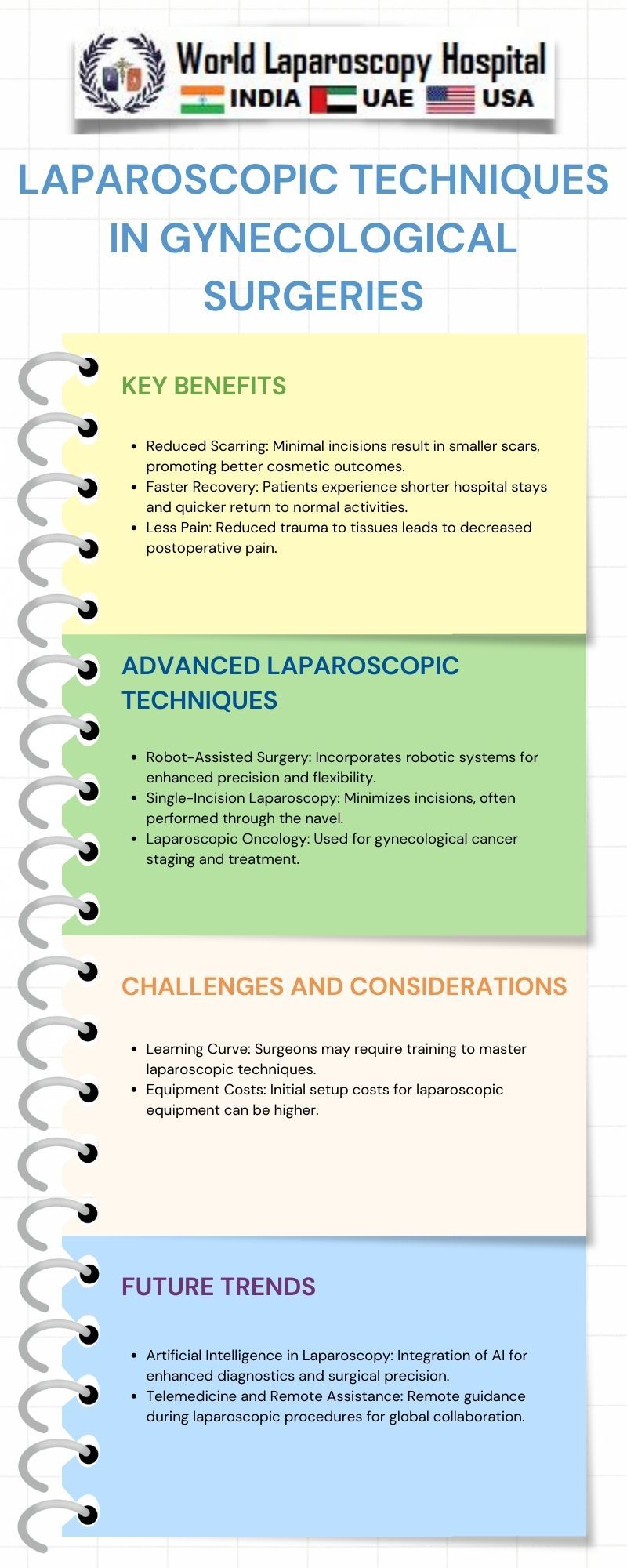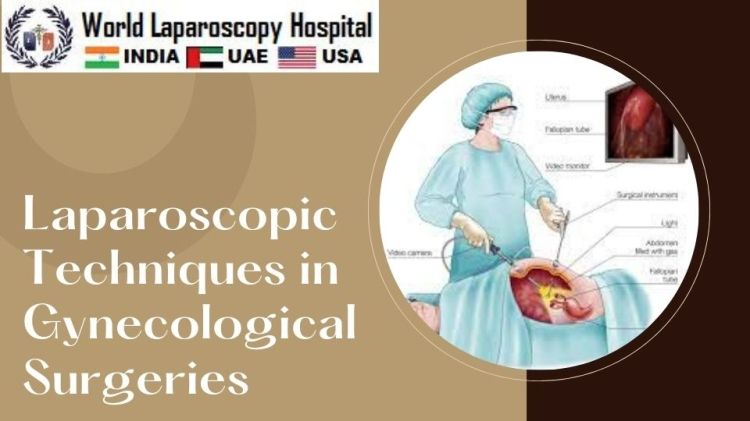Introduction:
Gynecological surgeries have undergone a transformative evolution with the advent of laparoscopic techniques. Traditionally, open surgeries were the norm, often associated with longer recovery times, increased postoperative pain, and larger incisions. However, laparoscopy has emerged as a game-changer, offering a minimally invasive approach that has revolutionized the field of gynecological surgery.

Historical Context:
To appreciate the significance of laparoscopic techniques in gynecology, it's essential to delve into their historical context. The first laparoscopic procedure was performed in the early 20th century, but it wasn't until the late 1980s that it gained widespread acceptance in gynecological surgeries. Technological advancements and improved instruments played pivotal roles in this transition.
Understanding Laparoscopic Surgery:
Laparoscopic Instruments:
Laparoscopic surgery involves the use of specialized instruments and a camera-equipped scope, known as a laparoscope. These instruments are designed to be inserted through small incisions, typically 0.5 to 1.5 centimeters in size. The laparoscope provides a high-resolution, magnified view of the surgical site, enabling precision and accuracy.
Insufflation and Trocar Placement:
Before the procedure, the abdominal cavity is insufflated with carbon dioxide to create a space for the surgeon to work. Trocars, or cannulas, are then inserted through the small incisions to allow access for the laparoscope and instruments. This minimally invasive approach reduces trauma to the abdominal wall and underlying tissues.
Common Laparoscopic Gynecological Procedures:
Laparoscopic Hysterectomy:
One of the most common gynecological surgeries, a hysterectomy involves the removal of the uterus. Laparoscopic hysterectomy offers several advantages over the traditional open approach, including smaller incisions, reduced blood loss, and quicker recovery times. Patients often experience less postoperative pain and are able to resume normal activities sooner.
Laparoscopic Ovarian Cystectomy:
Ovarian cysts are a prevalent gynecological condition, and laparoscopic cystectomy has become the preferred method for their removal. This technique allows for the precise excision of cysts while preserving ovarian function. The smaller incisions result in minimal scarring and decreased postoperative pain.
Laparoscopic Treatment of Endometriosis:
Endometriosis, a condition where tissue similar to the lining of the uterus grows outside the uterus, can cause significant pain and fertility issues. Laparoscopic surgery is often employed for the diagnosis and treatment of endometriosis. Surgeons can visualize and excise endometrial implants with precision, providing relief to affected individuals.
Advantages of Laparoscopic Gynecological Surgery:
Minimally Invasive Nature:
Laparoscopic techniques significantly reduce the invasiveness of gynecological surgeries. Smaller incisions lead to decreased trauma to surrounding tissues, resulting in less postoperative pain and a lower risk of infection.
Faster Recovery Times:
Compared to open surgeries, laparoscopic procedures generally entail shorter recovery periods. Patients can often return to their normal activities more quickly, contributing to improved overall quality of life.
Reduced Blood Loss:
The minimally invasive nature of laparoscopic surgery minimizes blood loss during procedures. This is particularly advantageous in surgeries such as hysterectomy, where excessive blood loss can pose complications.
Enhanced Visualization:
The laparoscope provides surgeons with a magnified and illuminated view of the surgical site. This enhanced visualization allows for precise and meticulous maneuvers, leading to improved surgical outcomes.
Cosmetic Benefits:
The smaller incisions associated with laparoscopic surgery result in minimal scarring, offering cosmetic benefits to patients. This is particularly relevant in gynecological surgeries where incisions are often in aesthetically sensitive areas.
Challenges and Considerations:
While laparoscopic techniques offer numerous benefits, they are not without challenges. Surgical expertise is crucial, and there is a learning curve associated with mastering laparoscopic skills. Additionally, access to advanced laparoscopic equipment and resources may vary, impacting the widespread adoption of these techniques globally.
Future Directions and Technological Innovations:
The field of laparoscopic gynecological surgery continues to evolve with ongoing technological advancements. Robotic-assisted laparoscopy, for instance, introduces robotic systems to enhance surgeon dexterity and precision. Artificial intelligence applications are being explored to analyze laparoscopic images and assist in surgical decision-making.
Patient Perspectives:
Understanding the patient experience is paramount in evaluating the success of laparoscopic techniques in gynecological surgeries. Patient satisfaction is often higher due to reduced pain, quicker recovery, and improved cosmetic outcomes. Interviews and surveys can provide valuable insights into the subjective aspects of laparoscopic surgery.
Conclusion:
In conclusion, laparoscopic techniques have revolutionized gynecological surgeries, offering a myriad of advantages over traditional open procedures. As technology continues to advance and surgical expertise grows, the role of laparoscopy in gynecology will likely expand, further improving patient outcomes and shaping the future of women's healthcare. The ongoing integration of innovative technologies and a commitment to surgical excellence ensures that laparoscopic techniques will continue to be at the forefront of gynecological advancements.
